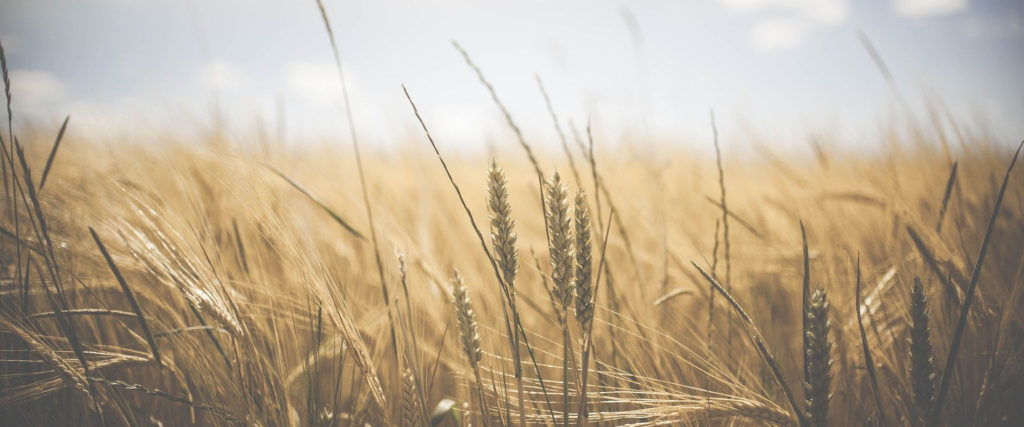Written by Aleha Pillay and Cetana Wong
The global population is estimated to reach 10 billion people by 2050, with two-thirds of the population projected to live in cities and at least a third moving to join the global middle class. As countries become more urbanised and the average wealth of each citizen is increased, people generally consume greater quantities of more resource intensive foods such as meats and dairy. There is currently a “food gap” between the number of calories available from food and the projected calorific demand in the future, which primarily stems from continual population growth and changing diets[1].
The landscape of food production is also changing, due to advances in technology, business shifts, government policies and economic changes. Multinational corporations are increasingly becoming more prominent influencers of the crops that are grown and the foods people eat. Overall, these factors lead to a convergence towards diets which are high in calories, protein and animal-based foods. While this shift may provide health and welfare benefits to some, the general consensus is that a large scale dietary shift would make it more difficult for the world to achieve several of the United Nations Sustainable Development Goals, namely those related to healthy lives, water management, climate change and terrestrial ecosystems[1].
In this article we will focus on the ecological aspects of animal-based foods, in particular the raising of livestock for meat consumption, and analyse how they affect various parts of our environment.
Environmental Impacts
Agricultural livestock production has many ecological impacts, which can be broken down into several main categories, which we will be exploring further;
- Resource use (land, water, food)
- Contamination of air, water and soil
- Greenhouse gas emissions
While it has been widely accepted that animal products are usually more resource intensive and impactful on the environment when compared to their plant-based counterparts, that is not to say that the rest of the agricultural sector is without fault. This article focuses on the ecological impacts of livestock production, but we acknowledge that certain crops and farming practises also incur large resource costs and affect the quality of environmental factors.
Resource Use

Production of animal-based food was found to utilise more than 75% of global agricultural land while accounting for less than 40% of the total protein consumption based on 2009 data[1]. The US alone uses approximately 50% of its total land area, 80% of its fresh water and 17% of its fossil energy in food production. This heavy reliance on natural resources indicates that current food production practises are unsustainable[2].
In terms of production of animal-based foods, there are two main inputs to consider when evaluating the conversion of plant protein into animal protein. The first is the direct cost of the production, which includes factors such as the amount and type of feed. The second is the indirect costs associated with maintenance of breeding herds. Major fossil fuel inputs for plant-based foods come in the form of fertilisers, agricultural machinery, fuel, irrigation and pesticides, which vary in quantity depending on the crop being grown. When these energy inputs are weighed against their energy and protein output, it was found that crops such as grains and legumes (eg. soybeans) are more resource efficient than fruits, vegetables or animal products. The average estimate is about 2.2 kcal of fossil energy per kcal of plant protein produced. In comparison, the average fossil energy required for animal-derived protein production is more than 10 times higher (25 kcal)[2].
Increased expansion of agricultural land and deforestation also results in loss of biodiversity as natural habitat areas are lost or fragmented. This has the unintended consequence of increasing interactions between wildlife, livestock and humans. Additionally, this intensifies the population of viruses and bacteria which can cause zoonotic diseases, exacerbating the risk of spill over events[3].
Not only is expansion of agricultural land a problem, but continual use of it raises growing concerns around soil erosion and loss of essential nutrients. This is applicable to cropland, but is also problematic in pastureland, where overgrazing subjects the soil underneath to accelerated erosion. Study of the natural cycles of soil replacement estimates that it takes 500 years to replace even an inch of lost soil, which is much slower than current erosion levels. The nutrient loss can be mitigated with the addition of fertilisers to arable land, however, production of these chemicals requires additional energy input and resources[2].
Contamination of Air, Water and Soil

Based on 2016 statistics, over 65 billion animals are reared worldwide for meat production, not including the almost 8 billion cows and hens raised for milk and egg production respectively. It is estimated that the livestock sector contributes up to 50% of net global agricultural products and supports the livelihood and food security of over a billion people in developing nations[4].
Not only has the number of animals increased, but so too has the intensity of livestock farming, with industrial-scale livestock production being made possible through increased concentrated feeding, use of pharmaceuticals, and improving infrastructure and feed efficiencies. These facilities generate large quantities of manure, typically far away from areas of intensive crop farming where it could be used as a fertiliser. As a result, large amounts of excretory nutrients (nitrogen and phosphorous), organic matter and faecal microbes are concentrated where animals are reared[4].
As mentioned in a previous article, antibiotics are commonly used in livestock farming, for both disease prevention and growth stimulation. When administered to the animals, they are absorbed and partially metabolised before being excreted, meaning that traces of both the drugs and their by-products are present in waste material. It’s estimated that anywhere from 30 – 90% of the main compound is excreted unmetabolised into the environment. These antibiotics also allow antimicrobial resistant bacteria to grow and develop in the intestines of the animal, which are also passed through into the manure and into the environment[4].
Therefore, livestock effluents will typically have high levels of suspended solids, pharmaceutical compounds, excretory nutrients (nitrogen and phosphorous), organic matter, and potentially resistant microbes. As a result, application of manure from these animals on croplands can result in these impurities seeping into ground and surface water sources and having devastating effects on water quality, encouraging growth of algae and promoting the spread of antibiotic resistant bacteria[4]. In particular, nitrogen run-off, from commercial fertilisers or manure, can also have devastating effects if large amounts make their way into the oceans. When nitrogen rich run-off reaches the oceans, it can cause plankton blooms. On coral reefs, this may be devastating, as populations of the crown-of-thorns sea stars (COTS) exponentially grow (see figure below). This is highly destructive, as they eat coral and can have serious, long lasting effects on coral cover in reefs[5].
Additionally, when livestock waste is used as a fertiliser with antibiotic compounds and by-products present, they interact with components in the soil and can enter the food chain through plant uptake, seepage into groundwater or through runoff into surface water sources. Through interaction with either active compounds or antibiotic resistant bacteria, soil bacteria can gain antimicrobial resistance and may become sources of serious disease[4].
Air quality is also a major factor that is affected by livestock production, through the production of gaseous ammonia, as well as greenhouse gases such as methane and nitrous oxide. Agriculture in general is responsible for a large portion of total ammonia emission, with 75% originating from livestock manure management. More than half of this is due to cattle, with pigs and poultry making up a majority of the remainder[4]. At high enough concentrations (24 – 50 ppm), ammonia can cause irritation to the eyes, nose and throat. Prolonged exposure can severely affect the respiratory system, potentially resulting in damage to the lungs or death.
Greenhouse Gas Emissions

In addition to air quality concerns, livestock production is responsible for roughly 15% of global greenhouse gas emissions, of which ruminants (cows, sheep, goats, etc.) are the main contributors. Over 40% of these emissions are in the form of methane, which is released as a by-product of fermentation in the intestines of the animals and through manure decomposition. 27% is in the form of carbon dioxide emitted as a result of transporting animal products and feed and the remainder is emitted as nitrous oxide, from manure and fertilisers[4].
Future Outlook

In order to reduce the adverse outcomes of farming, focus has been placed on a combination of both production and consumption-based solutions that, together, can be used to help us reach a sustainable food future. A number of reports centre on three main dietary changes that can be made to aid in this endeavour[1]:
- Reduction of calorie overconsumption
- Reduction of protein overconsumption by reducing consumption of animal-based foods
- Reduction of beef consumption
Studies using models of global agriculture and diet trends have analysed the impact of altering current farming processes and eating patterns on factors such as land and water use, greenhouse gas emissions and availability of food. They concluded that for significant change to be made in establishing more sustainable agricultural practises, it is imperative that we employ a multi-faceted strategy. It is estimated that implementing these shifts at a large scale can close the food gap by up to 30% and substantially reduce the resource use and environmental impact of current agricultural practises[1].
Of all the animal-based foods that are commonly produced, beef is regarded as one of the least efficient foods to produce from a “resource input to food output” perspective, which is why it has been highlighted. Accounting for all types of feed, it is estimated that the conversion of feed calories and ingested protein to edible calories and protein can be as low as 1% and 4% respectively. As a result, beef production uses more land and freshwater resources, and produces more greenhouse gas emissions per unit protein than any other commonly consumed food[1].
There is a lot we can’t cover for the sake of brevity in this article, but we encourage you to read reports by the EAT Lancet Commission or World Resources Institute about moving towards diets and agricultural practices that are more sustainable. Keep an eye out for the final article in this series on vegetarianism and animal welfare.
Works Cited
[5] World Wildlife Foundation. The Starfish that Eat the Reef. 2015.

